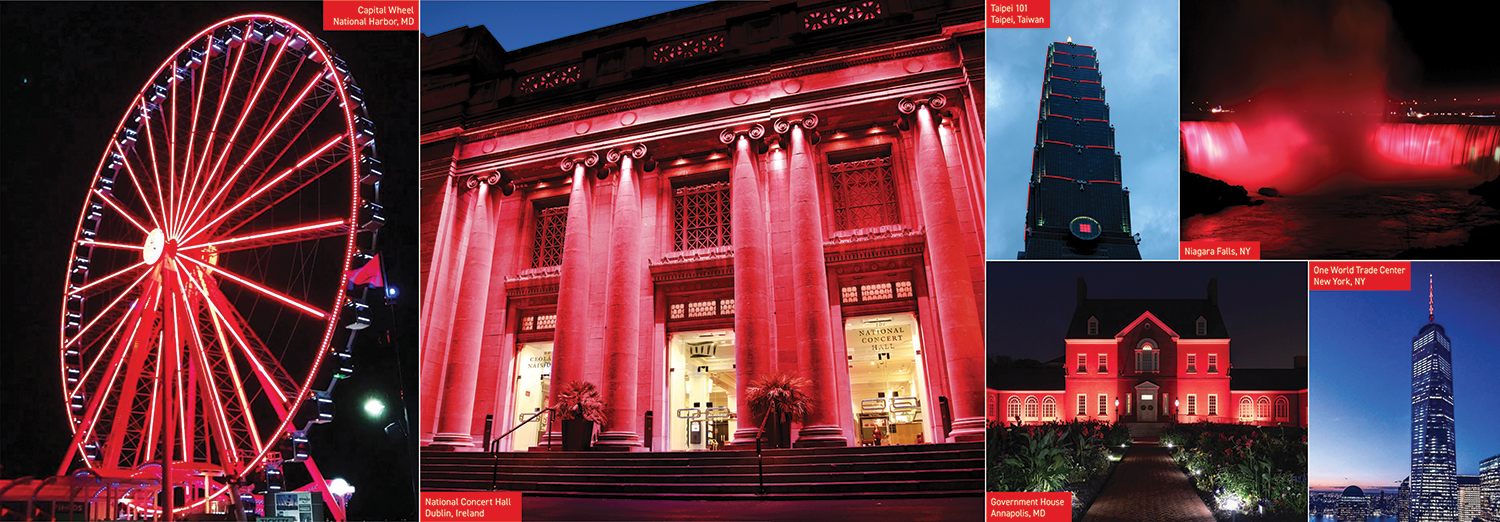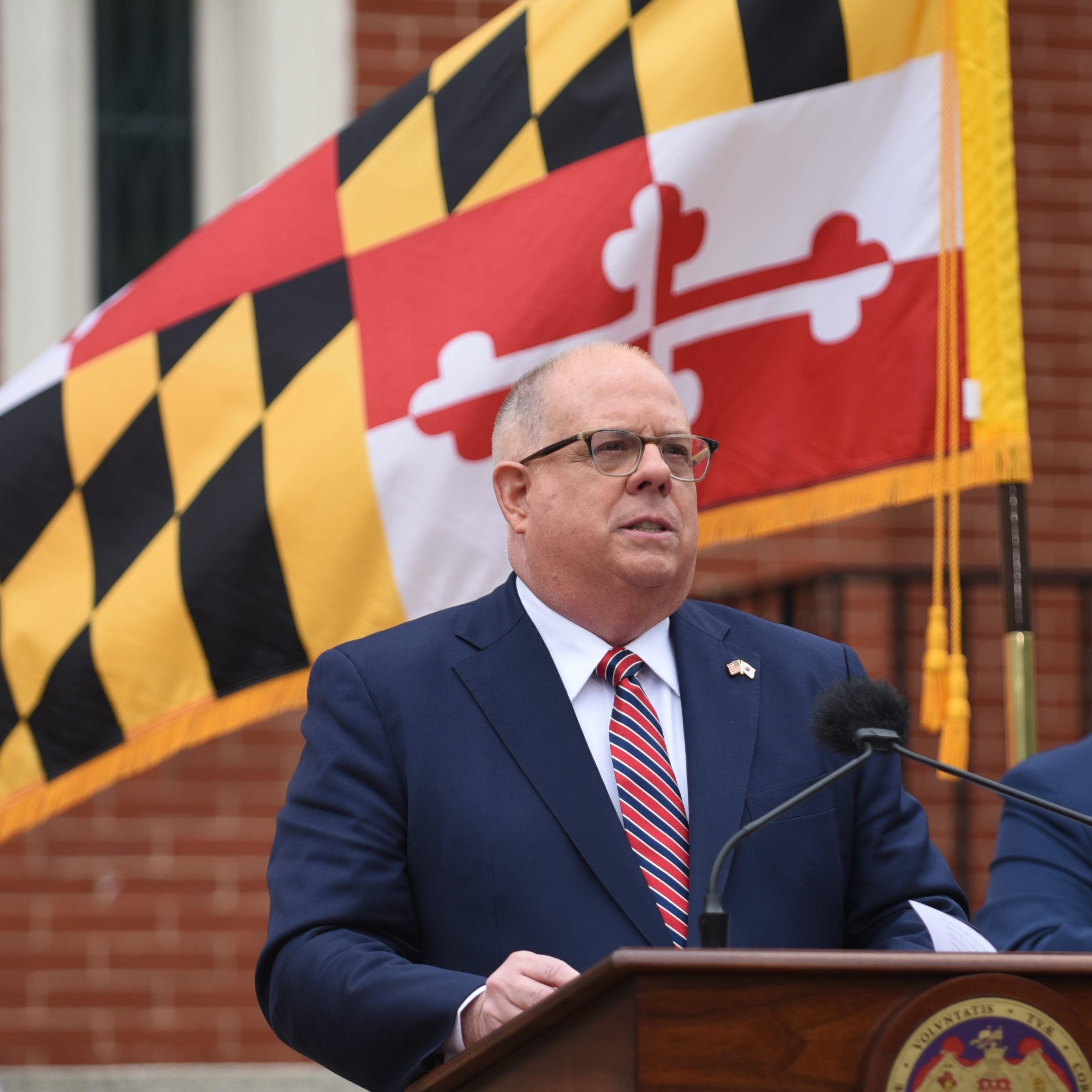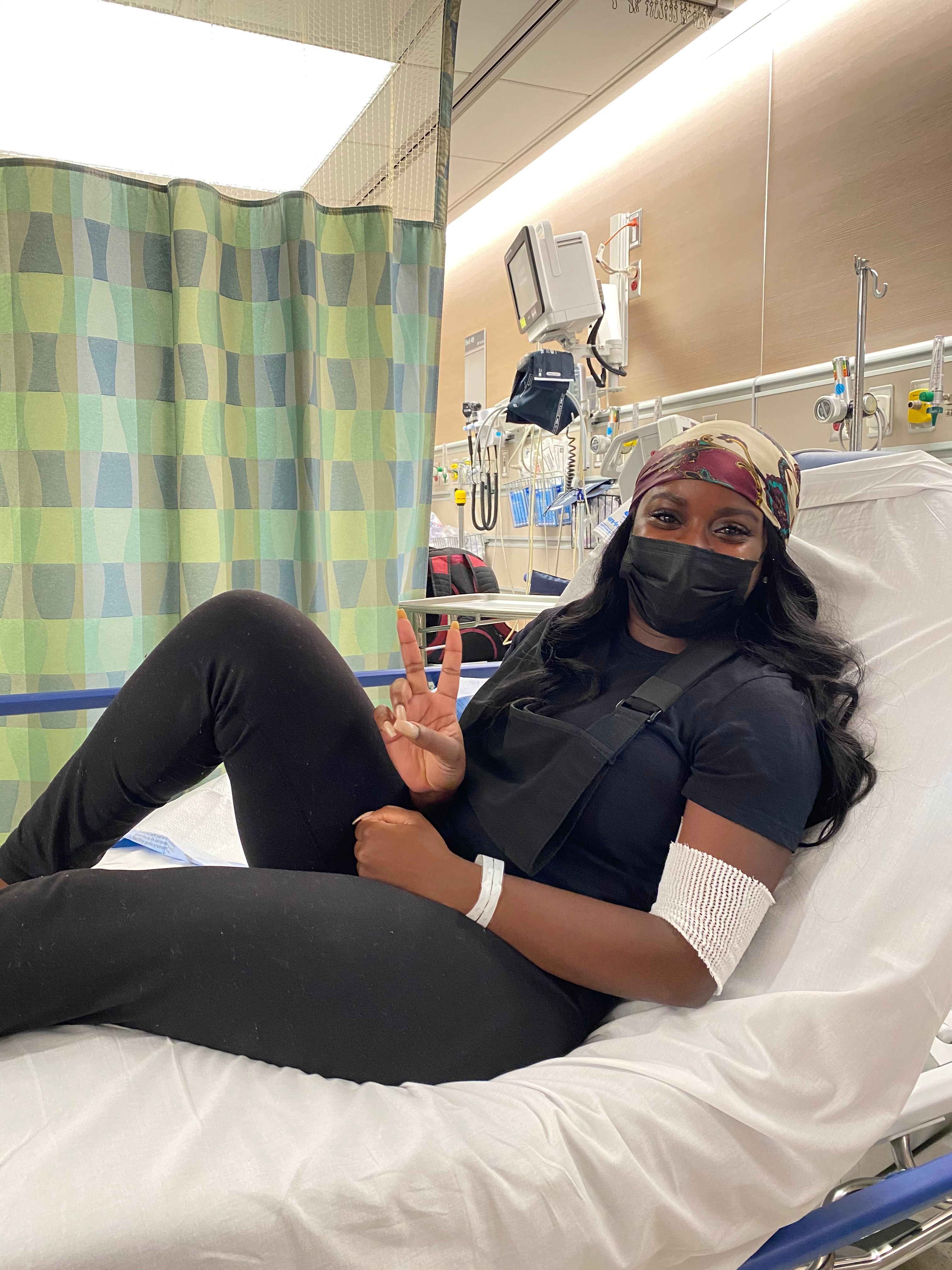Article
Shining a Light on Lymphoma During Blood Cancer Awareness Month
Maryland Governor Larry Hogan and LRF Ambassador and Advocate Paul Majkowski share why Blood Cancer Awareness Month is an important tool in helping to raise awareness of lymphoma, bring the community together and advance cures for this disease.
Light it Red for Lymphoma partners: Capital Wheel (Washington, DC); National Concert Hall (Dublin, Ireland); Taipei 101 (Taipei, Taiwan); Niagara Falls; Government House (Annapolis, MD); and One World Trade (New York, NY).

Due in large part to the Lymphoma Research Foundation’s (LRF) Advocacy Program, the month of September was designated Blood Cancer Awareness Month (BCAM) by the U.S. Congress in 2010. Blood Cancer Awareness Month (BCAM) is a time for members of the lymphoma community to harness their power, drive awareness, educate those around them and raise critical funds to support life-saving research.
For more than a decade, LRF has led the way in celebrating BCAM and World Lymphoma Awareness Day (September 15) through its grassroots initiative, Light It Red for Lymphoma, to shine a light on lymphoma, create fundraising opportunities to support innovative lymphoma research, and make the future brighter for all those touched by this disease.
Maryland Governor Larry Hogan is a lymphoma survivor and longtime advocate for the lymphoma community. He has also been instrumental in arranging for the Maryland Government House — Governor’s Residence and Baltimore City Hall to light red in partnership with LRF. He shares his insight on why elected officials believe awareness days are an important tool in helping to move innovation forward and advance cures. Lymphoma survivor and LRF Advocate and Ambassador, Paul Majkowski, shares why he is passionate about raising awareness for lymphoma and shares his experience advocating for Blood Cancer Awareness Month with LRF.
Maryland Governor and non-Hodgkin lymphoma survivor Larry Hogan.

Why do elected officials feel it is important to recognize causes through awareness days/months?
Elected officials should take every opportunity and use every resource at their disposal to raise awareness about causes and issues that affect the people they serve. As governor, I have a unique platform that allows me to reach people not only in Maryland but across the country and the world. Awareness days and months, particularly those related to cancers and other illnesses, are just one example of using that platform to support these causes and educate others about them.
How does shedding a light on these causes help to move solutions or innovation forward?
Many of the causes we’ve highlighted during my time as governor are diseases that often have no known cure, including various types of cancer. Through these awareness campaigns, we can encourage research that could one day lead to life-saving medical breakthroughs.
How do awareness months help foster a sense of community among those affected?
When I travel around the state, people often come up and thank me for helping to bring attention to a rare disease that has affected someone in their family, or for raising awareness of other causes that are important to them. During my own battle with cancer, I depended so much on the strong network of people around me. That sense of community is so important and often offers hope at a time when hope is needed most.
What can the public do to recognize these awareness days and mobilize their local government for support?
I would encourage anyone who wants to get involved to call or write to their local leaders, share information from trusted sources on social media platforms, or join a local support group.
How has Maryland helped to raise awareness of lymphoma and Blood Cancer Awareness Month?
Every five minutes, someone in the United States is diagnosed with lymphoma. After my own battle with stage 3 non-Hodgkin lymphoma, I remain committed to raising awareness of this disease in the hope that we might one day live in a world without cancer. That’s why our state is always proud to partner with the Lymphoma Research Foundation to light up Government House red for Blood Cancer Awareness Month and World Lymphoma Awareness Day.
LRF Ambassador/Advocate and diffuse large B-cell lymphoma survivor Paul Majkowski.

Why are you passionate about raising awareness for lymphoma?
As a lymphoma survivor, coming up on 25 years, I feel an obligation to give back and do what I can to further the Lymphoma Research Foundation’s mission to eradicate lymphoma and serve those touched by the disease. Satisfying the mission begins with awareness; for example, making our legislators aware of the impact of lymphoma on their constituencies, so that we can obtain funding for research. Likewise, awareness is vital to serving those touched by the disease, so that they know we are here to help and they are not alone. Lymphoma is unknown to many — until you’re told you have it and then ask what it is. Our work begins with awareness.
Part of your involvement with the Lymphoma Research Foundation has been as an LRF Advocate and helping to get September recognized as Blood Cancer Awareness Month by Congress. Can you share your experience?
The process involved outreach to legislators, including in-person visits, to make our ask for a resolution. I remember in such meetings, more often than not, the legislator (or more frequently, the staffer) did not know what lymphoma was, the scope of its impact, or the vitality and importance of the research being led by the Lymphoma Research Foundation and others. Making them aware was the first step, and armed with our resulting resolution for Blood Cancer Awareness Month, we had a new tool to make others aware as well.
How has BCAM evolved since its inception in 2010?
I think the evolution has gone from Blood Cancer Awareness Month being one of many Congressional resolutions to being a national month of awareness — a recognizable place on our calendar, an initiative around which we rally each year and build upon. Each year we grow and reach more and more people.
How does LRF recognize BCAM and what is the purpose of Light It Red for Lymphoma?
For the past 11 years, LRF has been celebrating Blood Cancer Awareness Month and World Lymphoma Awareness Day (September 15) through Light It Red for Lymphoma. It serves as a rallying point to energize the community and, literally, provide illumination to that piece of paper declaring BCAM. What better way to create awareness than to see famous landmarks across the world lit red?
Why is awareness a vital tool in the race to find cures for lymphoma?
To ensure that lymphoma has a seat at the table and is treated as a priority when it comes to decisions relating to research funding. Such awareness is also important to attract the top talent to lymphoma research.
Harness your power, drive awareness and educate those around by joining the Lymphoma Research Foundation’s Blood Cancer Awareness initiative Light it Red for Lymphoma.Visit lymphoma.org/lightitred to learn more.




